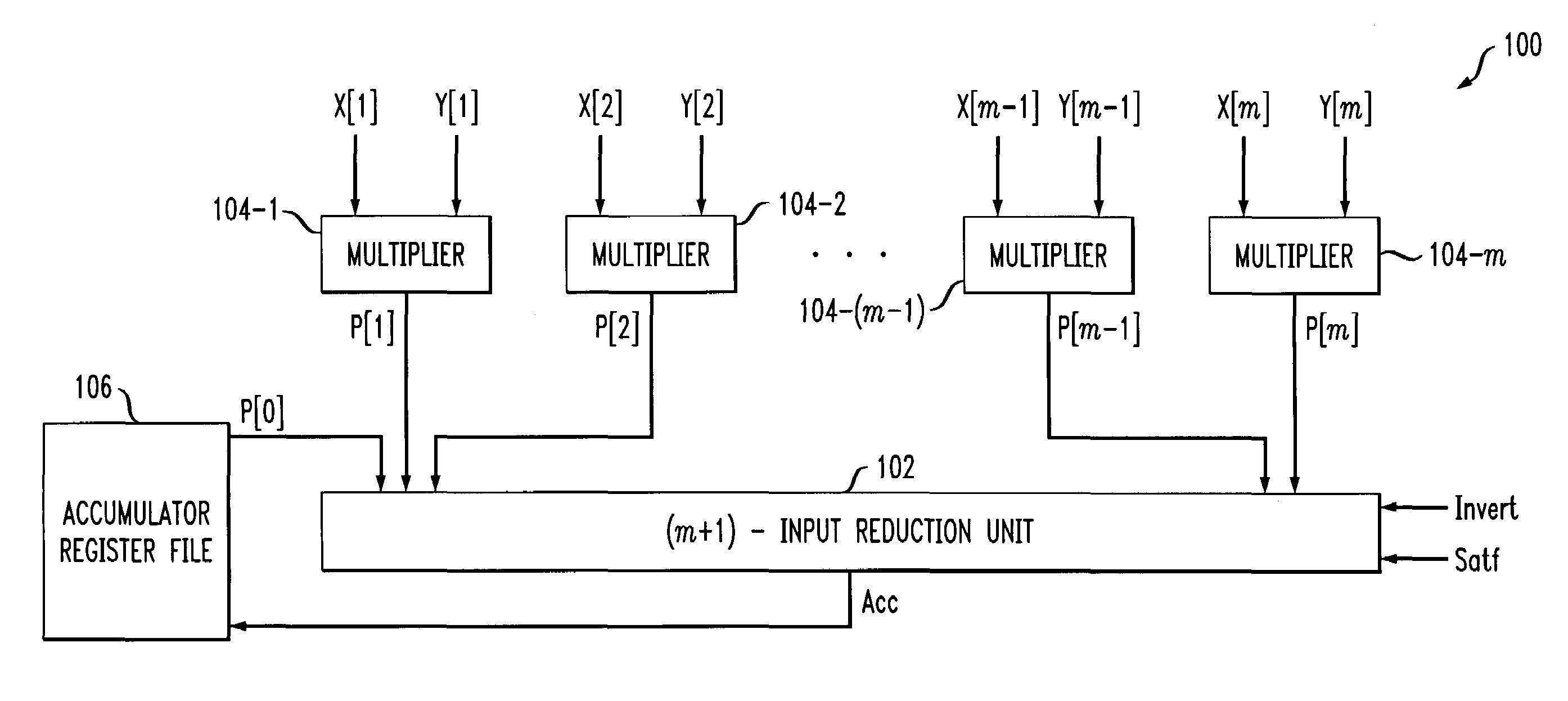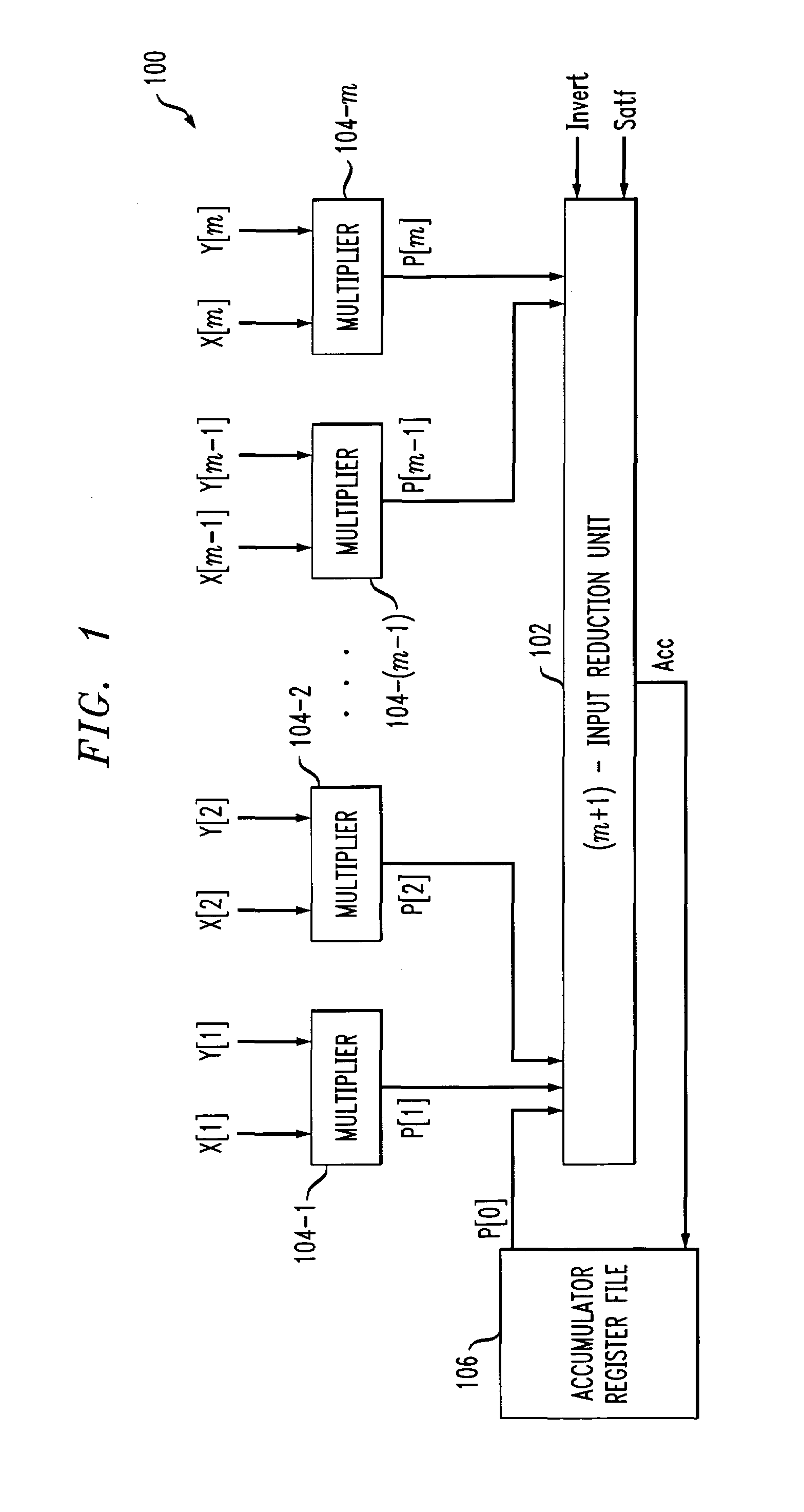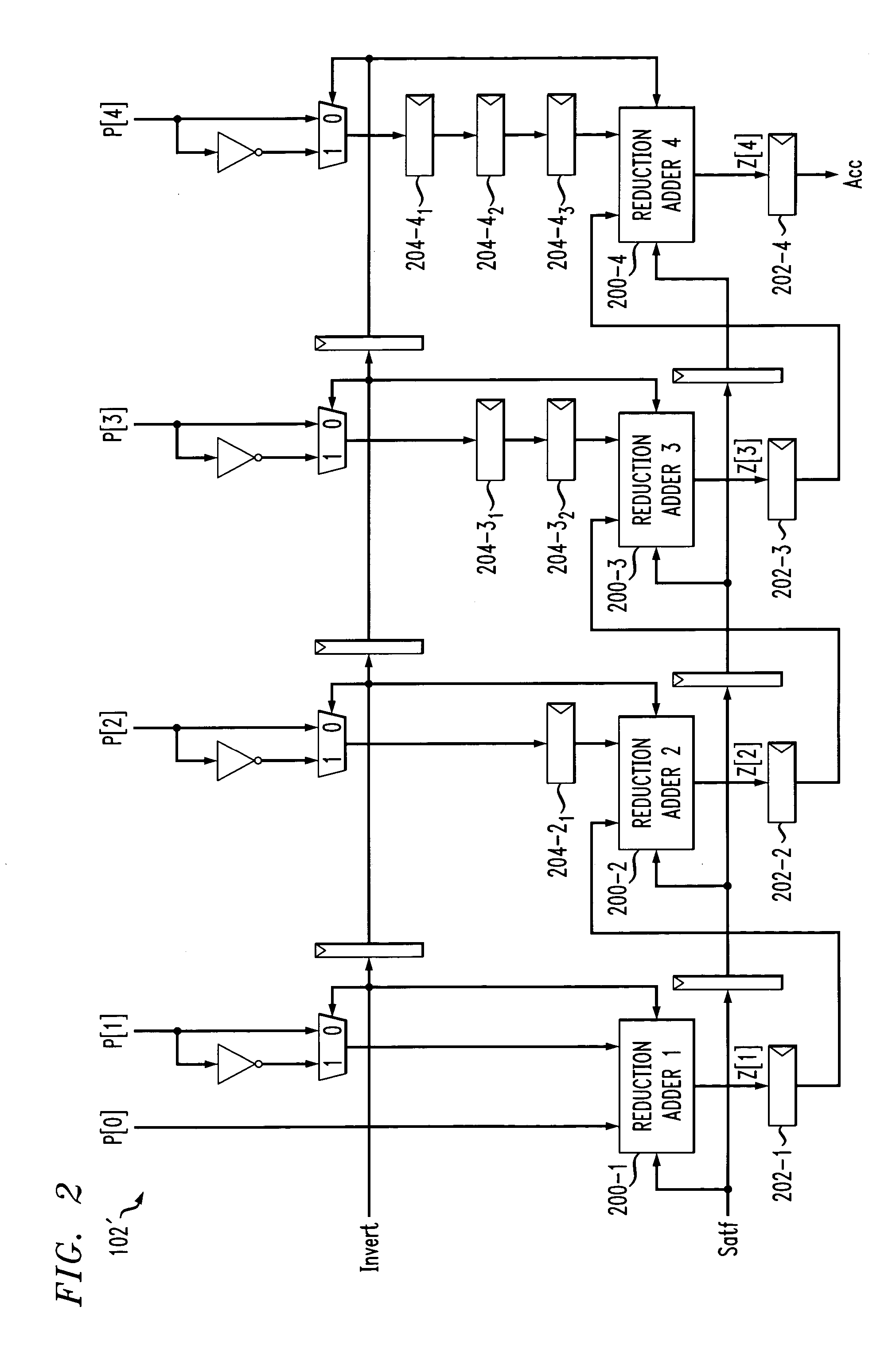Processor reduction unit for accumulation of multiple operands with or without saturation
a processing unit and operand reduction technology, applied in the field of digital data processors, can solve the problems of overflow, adversely affecting processor performance, and many conventional techniques are unable to provide an efficient mechanism for controllable selection of saturating or wrap-around arithmetic, so as to achieve the effect of increasing the required circuit area and pipelined quickly
- Summary
- Abstract
- Description
- Claims
- Application Information
AI Technical Summary
Benefits of technology
Problems solved by technology
Method used
Image
Examples
Embodiment Construction
[0026]The present invention will be described in the context of an exemplary reduction unit, accumulator unit, and arithmetic units, and a multithreaded processor which incorporates such units. It should be understood, however, that the invention does not require the particular arrangements shown, and can be implemented using other types of digital data processors and associated processing circuitry.
[0027]A given processor as described herein may be implemented in the form of one or more integrated circuits.
[0028]FIG. 1 shows a portion of a processor 100 configured in accordance with an illustrative embodiment of the invention. The processor 100 includes an (m+1)-input reduction unit 102 coupled between m parallel multipliers, denoted 104-1, 104-2, . . . 104-m, and an accumulator register file 106.
[0029]Each of the multipliers 104-i computes P[i]=X[i]*Y[i], 1≦i≦m, with or without saturation. The m multiplier outputs are then fed as input operands to the (m+1)-input reduction unit 10...
PUM
 Login to View More
Login to View More Abstract
Description
Claims
Application Information
 Login to View More
Login to View More - R&D
- Intellectual Property
- Life Sciences
- Materials
- Tech Scout
- Unparalleled Data Quality
- Higher Quality Content
- 60% Fewer Hallucinations
Browse by: Latest US Patents, China's latest patents, Technical Efficacy Thesaurus, Application Domain, Technology Topic, Popular Technical Reports.
© 2025 PatSnap. All rights reserved.Legal|Privacy policy|Modern Slavery Act Transparency Statement|Sitemap|About US| Contact US: help@patsnap.com



